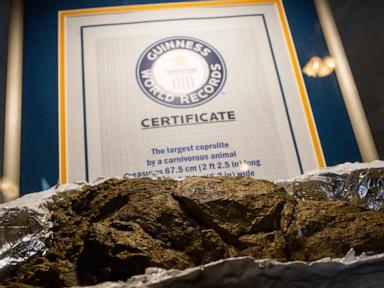One way to help tell how a Tyrannosaurus rex digested food is to look at its poop. Bone fragments in a piece of fossilized excrement at a new museum in northern Arizona — aptly called the Poozeum — are among the tinier bits of evidence that indicate T. rex wasn’t much of a chewer, but rather swallowed whole chunks of prey.
The sample is one of more than 7,000 on display at the museum that opened in May in Williams, a town known for its Wild West shows along Route 66, wildlife attractions and a railway to Grand Canyon National Park. The Poozeum sign features a bright green T. rex cartoon character sitting on a toilet to grab attention from the buzzing neon lights and muffled 1950s music emanating from other businesses.

Inside, display cases filled with coprolites — fossilized feces from animals that lived millions of years ago — line the walls. They range from minuscule termite droppings to a massive specimen that weighs 20 pounds (9 kilograms). Poozeum's president and curator, George Frandsen, bought his first chunk of fossilized feces from a shop in Moab, Utah, when he was 18, he said.
He already loved dinosaurs and fossils but had never heard of fossilized poop. From there, his fascination grew. “It was funny.
It was gross," he said. "But I learned very quickly it could tell us so much about our prehistoric past and how important they are to the fossil record.” Coprolites aren’t tremendously common but they can make up the majority of fossils found at some s.























